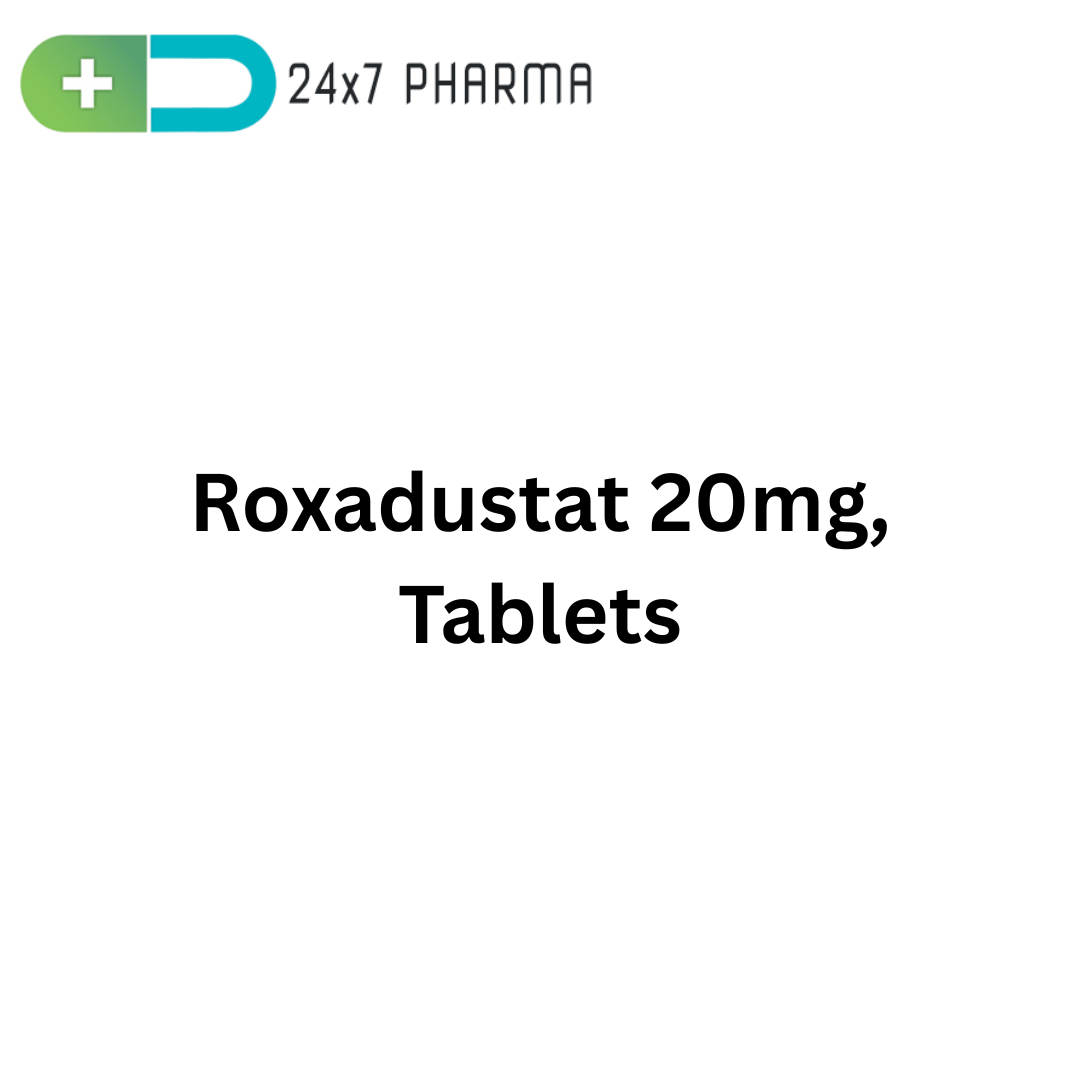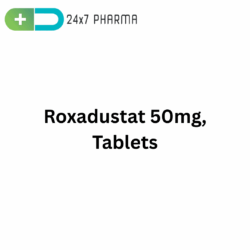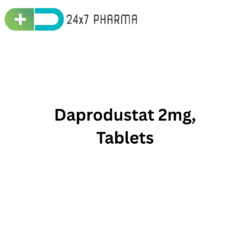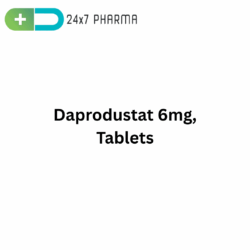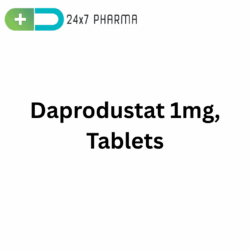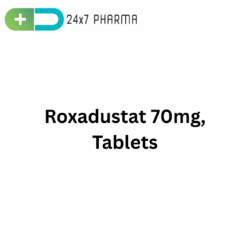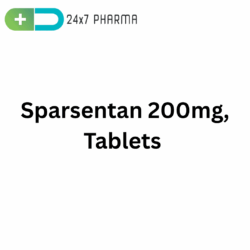Renofix 20mg, Roxadustat Tablets
Roxadustat, a brand-new oral drug created to treat anemia linked to chronic kidney disease (CKD), is an ingredient in Renofix 20mg. Anemia is a common complication in CKD patients, particularly those undergoing dialysis, due to reduced erythropoietin production by the kidneys. Renofix addresses this issue by promoting endogenous erythropoietin synthesis. As an orally administered drug, it offers a convenient alternative to injectable erythropoiesis-stimulating agents (ESAs).
What is Renofix (Roxadustat) 20mg?
Tablets under the Renofix trademark include Roxadustat, an inhibitor of hypoxia-inducible factor prolyl hydroxylase (HIF-PHI). It stimulates the body’s natural response to hypoxia, leading to increased erythropoietin production and improved iron metabolism
- Brand Name: Renofix 20mg
- Generic Name: Roxadustat
- Drug Class: HIF-PHI (Hypoxia-Inducible Factor Prolyl Hydroxylase Inhibitor)
- Form: Oral tablets
- Used For: Anemia due to CKD
Mechanism of Action
Roxadustat works by inhibiting prolyl hydroxylase enzymes, which stabilize the HIF transcription factor. In normal conditions, HIF is degraded rapidly in the presence of oxygen. But because Roxadustat simulates hypoxic conditions, HIF can build up and promote:
- Increased erythropoietin (EPO) production from kidneys and liver
- Improved iron absorption from the gastrointestinal tract
- Reduced hepcidin levels, a hormone that limits iron availability
- These effects culminate in enhanced red blood cell production, even in patients with impaired kidney function.
How to Use / Indications
Indications:
Chronic kidney disease (CKD)-related anemia treatment in:
- Non-dialysis-dependent (NDD) CKD patients
- Dialysis-dependent (DD) CKD patients
How to Use:
- Always take Renofix as prescribed by your nephrologist.
- It is administered orally, with or without food.
- Regular monitoring of hemoglobin levels, ferritin, iron, and TIBC is recommended.
- Dose adjustments are made based on hemoglobin response.
How to Take / Dosage
General Dosage Guidelines:
- Initial Dose: Typically 20mg three times per week, but may vary based on patient’s weight, dialysis status, and hemoglobin levels.
- Titration: Dose can be increased or decreased every 4 weeks to maintain target hemoglobin (usually 10–12 g/dL).
- Maintenance Dose: Adjusted according to response.
Administration Instructions:
- Swallow the tablet whole with water.
- Can be taken with or without meals.
- Avoid missing doses; if a dose is missed, take it as soon as remembered unless it’s too close to the next dose.
Other Dosage Forms & Strengths
Renofix or Roxadustat may be available in other strengths such as:
- 50 mg
- 70 mg
- 100 mg
These strengths are often used in patients requiring higher or adjusted doses. The appropriate strength depends on clinical need and physician discretion.
Side Effects
Like all medications, Renofix (Roxadustat) can cause side effects. While many are mild, some may require medical attention.
Common Side Effects:
- Hypertension (increased blood pressure)
- Diarrhea or constipation
- Nausea
- Fatigue
- Headache
- Dizziness
- Increased potassium levels (hyperkalemia)
Serious Side Effects (Rare):
- Thromboembolic incidents, such as pulmonary embolism and deep vein thrombosis
- Heart failure exacerbation
- Liver enzyme elevation
- Seizures
- Allergic reactions (rash, itching, swelling)
- Patients should immediately report chest pain, shortness of breath, or swelling to a healthcare provider.
Storage
- Storage Temperature: Keep at room temperature (15°C to 30°C).
- Protection: Store in a dry place, away from moisture and heat.
- Keep out of reach of children.
- Do not use the medication beyond the expiry date printed on the package.
Benefits of Renofix (Roxadustat)
- By doing away with the necessity for injections, oral administration increases patient compliance.
- Treats anemia in both dialysis and non-dialysis CKD patients.
- Regulates iron metabolism, reducing the need for IV iron.
- Increases endogenous erythropoietin production naturally.
- Reduces hepcidin, thus enhancing iron availability for red blood cell production.
- May offer cardiovascular safety benefits compared to injectable ESAs in some patients (ongoing studies).
Prescription
Renofix (Roxadustat) is a prescription-only medication. It should only be used under the guidance of a qualified healthcare provider, usually a nephrologist. Regular lab monitoring is essential during therapy to adjust the dosage and minimize adverse effects.
Drug Interactions
Roxadustat may interact with the following types of medications:
- Iron Supplements: May enhance the effect of Roxadustat, but require close monitoring.
- CYP Enzyme Modulators: Drugs affecting CYP enzymes (especially CYP2C8) may alter Roxadustat levels.
- Erythropoiesis-Stimulating Agents (ESAs): Should not be co-administered, as it increases the risk of excessive hemoglobin rise.
- Antihypertensive Drugs: Blood pressure should be monitored when used together.
- Avoid self-medication or combining it with herbal supplements unless advised by a doctor.
FAQs
How quickly does Renofix work?
An increase in hemoglobin is generally observed within 2–4 weeks of initiation, though full therapeutic effects may take longer.
Can I take Renofix along with iron supplements?
Yes, but it must be monitored by your doctor to avoid iron overload or interaction.
Do I need regular blood tests while on Renofix?
Yes, regular hemoglobin, ferritin, iron, and kidney function tests are essential for safe and effective treatment.
Conclusion
Renofix 20mg (Roxadustat) represents a significant advancement in the treatment of anemia in chronic kidney disease. Its oral administration, natural stimulation of erythropoietin, and beneficial effects on iron metabolism provide a compelling alternative to traditional injectable ESAs. However, it requires careful dose titration, ongoing lab monitoring, and medical supervision for safe use.
Renofix, a nephrology pharmacological innovation, is a key component of contemporary anemia care since it provides CKD patients with enhanced quality of life, reduced treatment load, and possible safety advantages.

